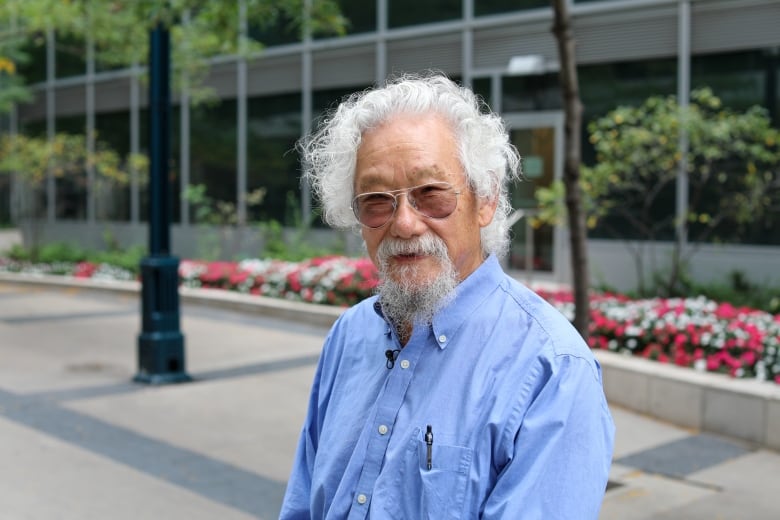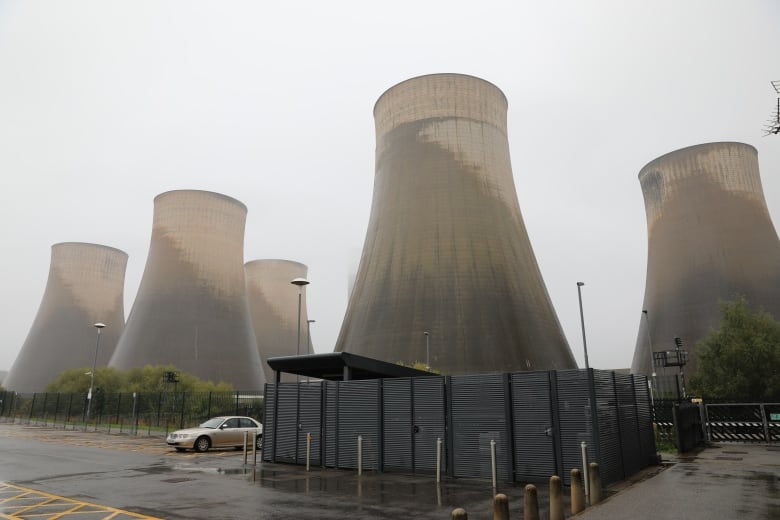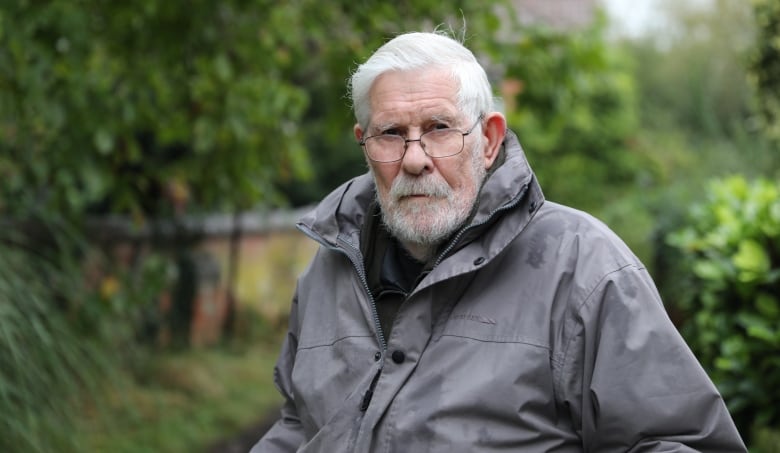Guilt and generational wisdom drive seniors to take climate action
Also: A tiny but dangerous kind of air pollution

Our planet is changing. So is our journalism.Keep up with the latest news on ourClimate and Environment page.
Sign up hereto get this newsletter in your inbox everyThursday.
This week:
- Why so many seniors are fighting for climate action
- A tiny but dangerous kind of air pollution
- U.K. becomes first G7 country to phase out coal. Here's how
Guilt and generational wisdom drive seniors to take climate action

"Bittersweet." Mikyung Kim said, smiling, as she joined a large crowd holding signs. It warmed the 57-year-old's heart to see this group of Canadian seniors marching for climate action in Toronto earlier this week.
But when she talked about why everyone was here,she started crying.
Kim described a guilt at seeing younger generations go out and protest about climate change which she sees as ultimately her generation's responsibility.
"It's so sad because we destroyed this world and then they are struggling."
Kim, part of a Korean Canadian community group for climate justice, wasn't alone in lamenting the state of the world being left for future generations. Across the country on Tuesday, through marches, dances, protests and speeches, the message was clear: action on climate is needed now. And seniors, despite a higher vulnerability to climate health impacts, say they have the experience and wisdom to speak out.
David Suzuki was one of them.

"Seniors tend to be marginalized," Suzuki said. "But they've got something society needs. They've lived an entire life."
The 88-year-old, who recently retired from his tenure as host of CBC's The Nature of Things, was one of the keynote speakers at the Toronto event.
Beyond his call to action for seniors to "get off the couch or the golf course and start telling the truth," Suzuki points to Indigenous cultures as a lesson in reverence.
"You go to a potlatch or a funeral or a marriage, guess who are the real rock stars at those? It's the elders," Suzuki described, adding that this respect allows a greater connection between the past and the present.

Indeed, the current dangers of climate change for seniors are far different than the decades they grew up in. The increased frequency and intensity of extreme weather events such as fires, floods and heat waves hit older people harder, as they are "more likely to have health conditions that make them more sensitive to climate hazards," according to the U.S. Environmental Protection Agency.
And while some dangers are apparent, such as restricted mobility after a disaster or heat-related illnesses, others may take years to be discovered. New research suggests a tropical cyclone can lead to millions of additional deaths in the years after it makes landfall, with the greatest death toll among adults 65 and older.
Jim Davis is with Seniors for Climate Action Now, one of the groups that organized the event. He sees no greater urgency than climate change, calling it all-consuming for mankind.
But he stresses that those who joined this crowd on a cloudy October afternoon aren't the ones these messages of protest need to reach.
"Hopefully we can convince the neighbours not the people that are in total denial, but people who are somewhat open-minded," Davis told CBC News.
"And it's tiring, but it's still very needful to do."
Anand Ram

Old issues of What on Earth? are here. The CBC News climate page is here.
Check out our podcast and radio show. In our newest episode : A stuffed dalmatian. An album of precious photos. A scorched doorknob. These are some of the personal items on display recently at Climate Week NYC. Meghan Fandrich and Diana Boston travelled to New York City from Lytton and Merritt, B.C., to share these remnants of the fire and flood that devastated their communities. They tell us why they hope the exhibit can make climate disaster tangible, and lead to change.

What On Earth drops new podcast episodes every Wednesday and Saturday. You can find them on your favourite podcast app, or on demand at CBC Listen. The radio show airs Sundays at 11 a.m., 11:30 a.m. in Newfoundland and Labrador.
Reader feedback
A couple of weeks ago, Dannielle Piper wrote about art to inspire climate action, including a photo of penguin chicks entombed in Antarctic ice. Peter Fretwell, lead scientist for the British Antarctic Survey, had told CBC's What On Earth that the "chicks likely died due to hypothermia after falling into melt pools."
That prompted reader Todd Weisbrot to disagree, writing: "Those images are of emperor penguin chicks that most likely died on the sea ice and their bodies capture more heat from the sun, resulting in their bodies sinking into the ice. This is a common occurrence in emperor penguin colonies."
We went back to check with Fretwell, and he confirmed that Weisbrot is correct the chicks pictured in the photo likely died on the sea ice, not in melt pools, and became entombed in ice the way Weisbrot described. However, he said high penguin chick mortality is linked to ongoing climate change. He added that Snow Hill Island colony, where the photo was taken, is the most northerly and one of the warmest emperor penguin colonies, and some penguin chicks do die in melt pools around the colony they are just not captured in the photo shown.
Our previous story is now corrected.
Write us at whatonearth@cbc.ca.
Have a compelling personal story about climate change you want to share with CBC News? Pitch a First Person column here.

The Big Picture: A tiny but dangerous kind of air pollution

While there has been much discussion in recent decades about smog and wildfire smoke, scientists are learning more about a category of air pollutants that are smaller in stature yet potentially more dangerous. They're called ultrafine particles (UFPs).
A thousand times thinner than a strand of hair, UFPs are emitted by vehicles (including EVs) and industrial activity and according to a recent study led by researchers at McGill University in Montreal, contribute to more than 1,000 premature deaths a year in that city and Toronto.
A 2020 study from the University of Illinois found that "compared to fine particles [ultrafine particles] cause more pulmonary inflammation and are retained longer in the lung." The study says UFPs have been found to cause cardiovascular disease and are linked to cancer and diabetes in adults; exposure can also lead to greater rates of babies with low birth weights.
In addition to looking at car-heavy urban settings, researchers are examining areas around airports. A study this year by Brussels-based advocacy group Transport and Environment suggested thousands of cases of high blood pressure, diabetes and dementia across Europe could be linked to UFPs emitted by planes.
Andre Mayer
Hot and bothered: Provocative ideas from around the web
-
How big are driving, transit and cycling in different European countries? Recent survey results let you explore which transportation modes residents use daily in 83 cities across Europe, and offer some reasons for those trends.
-
Climate change is making arid regions even drier. But Navajo farmers are returning to traditional techniques to help their soils hold more moisture and restore ecosystems and farmland.
-
Renters in Germany have embraced solar power, installing it on half a million balconies to generate renewable power and cut utility bills. Grist looks at how the country made that happen.
-
Entrepreneurs in Brazil are betting big on the voluntary carbon market to protect its forests. Will companies get on board after past scandals?
- Basements are increasingly prone to floodingas the climate gets warmer and wetter. Some politicians and researchers question whether we should continue using them as living spaces.

U.K. becomes first G7 country to phase out coal. Here's how

As the clock approached midnight on Monday, workers were invited to gather in the canteen at the coal-fired power plant in the English village of Ratcliffe-on-Soar to watch a live stream of the control room at the moment the generating units were turned off for the last time.
Britain was the first country to build a coal-fired power station in 1882, and this week became the first member of the G7 to phase out the facilities altogether.
"I think it is a good thing that it is going and it is a good thing the U.K. is leading the way," said Brian Hill, the chairman of the parish of Ratcliffe-on-Soar, near Nottingham in central England.
The 87-year-old watched the construction of the facility's eight 114-metre-high cooling towers in the 1960s, and now he is glad to see the sprawling site, which at one time employed several hundred workers, be decommissioned.
"It's a dirty fuel," he told CBC. "I prefer cleaner air."
The country's relatively rapid transition away from thermal coal, which was a key driver of the economy and still generated 80 per cent of Britain's electricity in 1990, is "a real proof point that transition and change can come very fast," said Matthew Webb, associate director of the Coal to Clean program with E3G, a U.K.-based independent climate think-tank. "We really got to get into the next gear and move up a level in terms of retiring the coal."

While many advanced economies, including Canada, have committed to phasing out thermal coal by 2030 and some European countries like Sweden and Austria have already accomplished that goal, there are still thousands of coal-fired power plants operating around the world.
In 2023, a new record for global coal consumption was set. It was primarily driven by new plants coming online in China.
Scientists say that in order to limit global warming to 1.5 C, the target established in the Paris Agreement in 2015, coal-fired power plants need to be phased out everywhere by 2040.
"Globally, we still face a massive challenge. We have some [2,000 gigawatts] of coal power running today. That's nearly 9,000 coal plants," Webb said in an interview.
But he said the U.K.'s ability to fast-track its phaseout of coal will hopefully set an example to other countries.
More than half of Britain's electricity now comes from renewable sources such as wind and solar power. The rest comes from natural gas and nuclear energy.
But at one time coal was the leader. It helped drive the U.K.'s industrialization and grow the country's economy. It generated the steam to run railways and power factories and communities.
The country's coal industry already went through a big decline under prime minister Margaret Thatcher in the 1980s, before global climate goals.
Still, the Ratcliffe-on-Soar plant once powered two million homes. It was slated to be closed in 2022, but under an agreement with the government, it stayed open for an additional two years because of a European-wide gas crisis triggered by Russia's invasion of Ukraine.
The plant, which is owned by Uniper, a German-based company, employed about 350 people before work wound down.
About half the workers will be involved in decommissioning the plant, which is expected to take two years.
"The U.K.'s coal plants were relatively old compared to other countries that have younger coal plants, but analysis does show that it is possible by 2040 for even these young coal plants to be retired in an economically efficient way," said Lucy Hummer, a researcher in the coal tracker program with Global Energy Monitor in Washington, D.C.
Hummer said while coal-powered capacity increased last year, she is "optimistic" that it could trend downwards soon.
China's thermal coal plants are not operating at their maximum capacity and are expected to operate at an even lower capacity in the future.
"The significant permitting of new coal plants in China is actually coming to an end," Hummer added. "And there's hundreds of gigawatts of new renewables that are being installed."
Briar Stewart
Stay in touch!
Thanks for reading. Are there issues you'd like us to cover? Questions you want answered? Do you just want to share a kind word? We'd love to hear from you. Email us atwhatonearth@cbc.ca.
Sign up hereto getWhat on Earth?in yourinbox every Thursday.
Editors: Emily Chung and Hannah Hoag| Logo design: Skdt McNalty













_(720p).jpg)


 OFFICIAL HD MUSIC VIDEO.jpg)
.jpg)



























































































